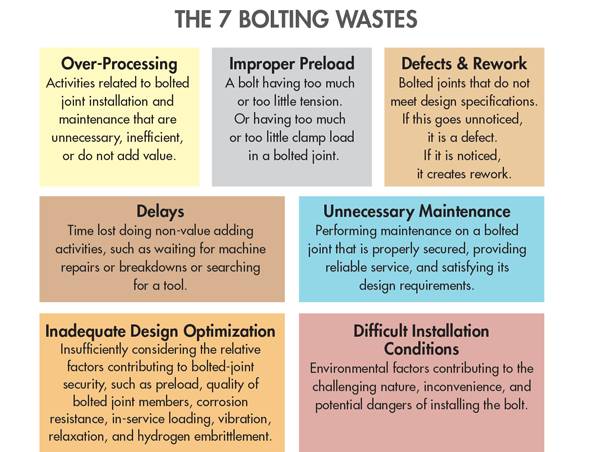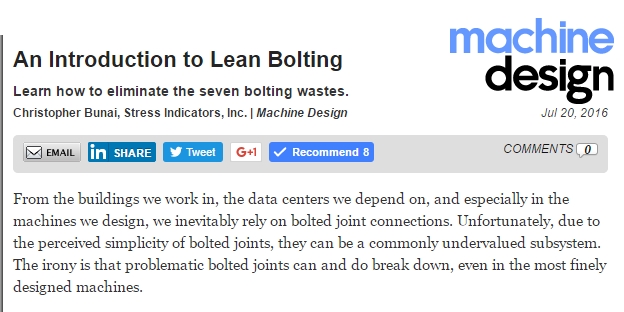 Our very own Chief Engineer, Christopher Bunai, wrote An Introduction to Lean Bolting that has been published in Machine Design. In the article, Chris explains the Seven Bolting Wastes which are an adaptation of the Seven Manufacturing Wastes within lean manufacturing.
Our very own Chief Engineer, Christopher Bunai, wrote An Introduction to Lean Bolting that has been published in Machine Design. In the article, Chris explains the Seven Bolting Wastes which are an adaptation of the Seven Manufacturing Wastes within lean manufacturing.
The following is an abstract of the article:
Lean manufacturing is an outgrowth of the Toyota Production System developed in Japan throughout the 20th century. The Toyota Production System was created to enhance the value that their products brought to customers. They proposed that the best way to do this was by methodically minimizing or eliminating “muda” or waste from the value stream. The idea is to get the highest quality product to the customer at the lowest possible cost. The value stream is defined as the series of processes (supply chain) that connect raw materials to the products shipped to customers. It was deduced that the customer would not be willing to pay for non-value added activities within the value stream that could be considered waste.

This idea led to the widely accepted concept within Lean Manufacturing known as the Seven Manufacturing Wastes. While describing these wastes in detail is beyond the scope of this article, we will be referencing their fundamental and systemic truths as we introduce a new philosophy of The Seven Bolting Wastes. The seven bolting wastes describe common but undesirable occurrences in the use and maintenance of bolted joints. The goal of the concept is to provide a general framework to analyze and evaluate any bolted joint for the existence of waste. Once the wastes are identified, targeted troubleshooting/brainstorming can begin to increase the likelihood of recognizing solutions that can address the root cause.
To read the full article click the following link http://machinedesign.com/fasteners/introduction-lean-bolting

